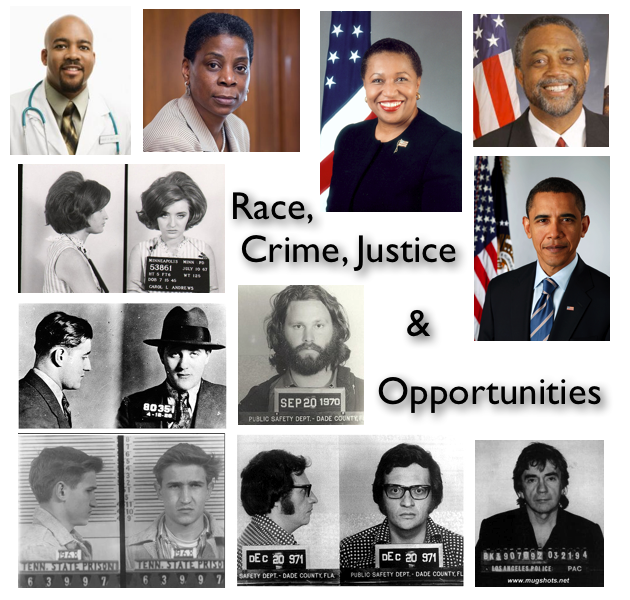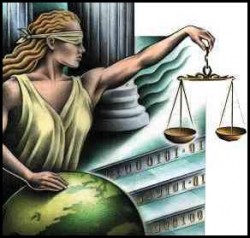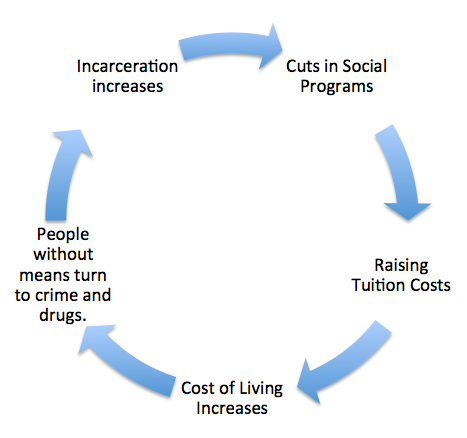
Johnson County Iowa is planning to build a Justice Center that will replace an undersized courthouse that is over 100 years old and a similarly undersized jail that is about 30 years old.
Incarceration Demographics. Those in opposition of the Justice Center focus their efforts primarily on criticizing the expanded jail component of the new Justice Center facility. They argue that the current justice system in Johnson County is racially biased in its outcomes. In a county where 90% of residents are white, and approximately 40% of those incarcerated are people of color, it’s easy to see how someone could come to that conclusion. According to this racism conspiracy theory, presumably the police, judges, public defenders, and county administrators have all secretly conspired to arrest and incarcerate a disproportionate number of people of color.
Institutionalized Systemic Racism. Unfortunately, the problem of racial inequality in the justice system is not isolated to Johnson County, Iowa. There is evidence of a nation-wide systemic racial bias in the justice system. Racial profiling is prevalent in policing with people of color being followed and stopped more frequently. Areas more heavily policed are often neighborhoods where people of color live. This is the situation nationally, and even in Johnson County, Iowa. The arrest and incarceration statistics produced by such policing seem to justify more of the same, because they suggest that crime influenced by race. It’s more cost effective to spend time and money where you believe crime is likely to occur. If policing of individuals and neighborhoods were more equally distributed, then crime statistics would be more reflective of a community’s inherent racial demographics. This video provides one example of among thousands.
However, prejudice in the justice system is only part of the problem.
One needs to go way up stream to find the actual causes of prejudice and crime.
Societal Racial Stereotypes. To some degree, our entire society still holds to racial stereotypes. Consider the images at the top of this page. News media and the entertainment industry sometimes show a biased portrayal of race that’s the opposite of the image above. Our personal opinions and views about people of any religion, nationality, or race, are largely based on our personal experiences. Usually our views are based on anecdotal evidence. One person may have had almost entirely positive experiences with others of a certain religion, nationality, or race. Another person may have had a disproportionately high number of bad experiences with others of a certain religion, nationality, or race.
 Justice is Blind. Enduring social racism in our country is most visible in the populations of jails and prisons.
Justice is Blind. Enduring social racism in our country is most visible in the populations of jails and prisons.
Yet, ironically, the justice system is possibly the only haven in our society where racism is supposedly most limited.
The legal system is constructed so that justice is blind — laws and penalties apply equally to all regardless of race. While this is true at some level, if not managed properly there can be inequity.
Holistic Analysis Needed. While some prejudice can exist in the justice system, and be proven statistically, it doesn’t entirely account for the great racial disparity in rates of incarceration. A holistic analysis is essential for understanding the real causes of racial inequality in society.
Conditions for Crime. While it’s true that some educated and affluent people will shoplift, embezzle, or engage in white collar crime, the majority of those breaking the law are doing so out of desperation. They are desperate to escape the unpleasantness of a life without opportunity, and use drugs as an escape. They are desperate for money and willing to do anything to get it. What creates these conditions is the unwillingness of the “haves” to share with the “have nots.” We’re told that “spreading the wealth around” is socialism, and selfishly not sharing wealth with those in need is the new virtue we should embrace.
Global Statistics. Most countries in the world ensure equal access to healthcare, higher education, employment, and opportunities. Global crime rates and incarceration rates reflect this fact and are directly related to social equality. Unfortunately, the United States has the highest crime rate in the world [source], and subsequently the highest incarceration rate in the world [source]. These statistics reflect the desperation and hopelessness of people who aren’t given other opportunities. This isn’t surprising given our aversion to “socialism” and helping the disenfranchised gain access to education and opportunities.
Cycles of Incarceration. Systemic racism is a complicated cycle where those who traditionally may not have means are not given the ability to change their life. Collective oppression may be a factor. For example, in a large metropolitan area, wealthy people on one side of town may not want their local taxes going to support higher quality public education in the other part of town. On a federal level, wealthy people may elect a president who will give tax breaks to the wealthy, and cut social service programs. This is a system that robs from the poor and gives to the rich. In the short run, the wealthy may feel like they are benefitting from such a system. However, before too long, there is a collapse of society from such inequity. The chart below shows the cycle of incarceration beginning with cuts in social programs like Head Start Programs, Alternative Schools, Upward Bound, and TRiO programs.

Three-Step Solution. There’s a simple three-step solution to break the above cycle of systemic racism and crime.
- Funding. Establish a TIF source of funding for education, housing, healthcare, and jobs for the impoverished and those at risk. Also, jail alternatives and diversion programs should be expanded. Such initiatives qualify for Tax Increment Financing because they result in a greater tax base.
- Programs. Create centers and infrastructure to promote the goals of step #1 above. Initiatives could include Head Start Programs, Alternative Schools, Upward Bound, and TRiO programs such as TRiO at the University of Iowa where students potentially at risk are given the support they need to succeed.
- Repeat. Return to Step #1 and repeat.
Justice Center Impact. As a facility, the proposed Justice Center for Johnson County would likely have little impact (positive or negative) on the larger issues in society that shape the demographics of policing, arrests, and incarceration. Hopefully additional space and resources dedicated to jail alternatives and diversion programs will help reduce recidivism.